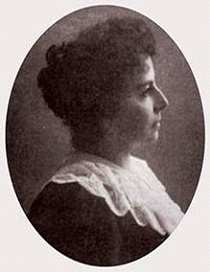Brutyan, Margarit Arami
Ethnomusicologist, Educator
1922-2002
Margarit Brutyan was born in Alexandropol (Gyumri) into a military family – her father was a sergeant in the army of the First Republic of Armenia. His ancestors emigrated from the Mush-Taron region of historic Armenia to Eastern Armenia after the Russo-Turkish war of 1828‑1829. Her grandfather, Arshak Brutyan (1864‑1936), was a famous musician, group leader, painter, and teacher.
Brutyan received her primary musical education at the Alexandropol music school. In 1934 the family moved to Yerevan, where she continued her education at the Spendiaryan music school. Later she graduated from the musical theory department of R. Melikyan Music College, then from the music department of Yerevan State Conservatory. She was taught by professors Z. Vardanyan and S. Koptev. However her musical development was greatly influenced also by her daily interaction with conservatory professors K. S. Sarajev, G. E. Budaghyan, V. G. Talyan, and G. G. Tigranov.
Following the advice of Conservatory professor Kr. Kushnaryan, she entered the post‑graduate program at the Institute of Arts of Armenia’s Academy of Sciences, choosing the branch of folk music. Kushnaryan became her advisor, mentor, teacher, and spiritual father. In 1955 she defended her thesis on “The Unique Characteristics of Armenian Folk Music.”
While still a student, Brutyan began teaching, at first classes on musical theory at Melikyan Musical College from 1938 to 1950, and then at the Conservatory from 1946 to 1992. In 1969 she founded a chair of folk music composition at the Conservatory, where she acted as the academic leader continuously until 1992. From 1977 to 1981 she was the dean of the joint department of vocal and musical theory; in 1988 to 1992 she chaired the department of Armenian folk music studies, and then served as a professor and the academic advisor of the department.
Brutyan was a prominent member of a number of scientific committees and professional councils, such as the Armenian Composers’ Union (1956), “Gitelik” Union (1960‑1975, president of the arts section), etc. Beginning in 1972, she led the newly established folk art committee at the Composers’ Union. Her articles have been published in various newspapers and magazines in Armenia and the diaspora, such as Echmiadzin, Sovetakan Arvest, Sovetakan Hayastan, Hayastani Ashkhatavoruhi, Patmabanasirakan Handes.
She has actively participated in the discussion of literally all matters pertaining to Armenian folk music. Her books include Tatul Altanyan (1962), Stepan Demiryan (1969), Vardges Talyan (1978), and Hay Zhoghovrdakan Eradzshtakan Steghtsagortsutsyun (Armenian Folk Music Compositions, revised second edition, 1983). She also prepared for publication and wrote a preface to the first volume of the comprehensive song and note collection by her grandfather, Arshak Brutyan, titled Ramkakan Mrmundjner (1985). During 1974 and 1991 she co‑authored with H. Eloyan Hay Monodik Eradzshtutsyan (Armenian Monadic Music), a collection of manuscripts of Armenian folk music, which was published in 1991 in Armenian and Russian. In 1995 she collaborated with A. Pahlevanyan on assembling, editing, and publishing the collection Hayrenakan Meds Paterazme Hay Dzoghovrdakan ev Gusanakan Ergerum (The Great Patriotic War in Armenian Folk and Troubadour Songs), dedicated to the 50th anniversary of the victory. In her book Hakob Asatryan – the Writer and Musician from the Diaspora (1999), she assessed this thinker’s activities, which were devoted to the mission of preserving the Armenian heritage. In addition to these works, Brutyan translated into Russian a number of professional manuals and programs, edited several research works on music theory, led dissertations, and supervised more than thirty diploma works.
The creation and development of a separate area of musical theory may be solely attributed to Brutyan. This is the art of recording and reproducing pieces of music by means of modern technology. The folk music creation group led by Brutyan from 1969 to 1990 organized within this time frame 31 trips to various districts of Armenia, Armenian-populated regions of Transcaucasia and the northern Caucasus, as well as abroad (to Poland and Romania). Through these trips and recordings by the group, 5,073 pieces of music were gathered and saved from destruction, including some still in use by the Turkish‑speaking Hamshen Armenians.
This prominent activist and teacher has left the following advice for future generations to follow: “Remain devoted to your origins and preserve them, trust the memory, the knowledge, and the wisdom of your people.”
Prepared by the Central State Archives, Republic of Armenia
Bibliography:
Encyclopedia of the Republic of Armenia, v. 1, 1990.
- Kirakosyan, Margarit Arami Brutyan, Yerevan, 2000.





